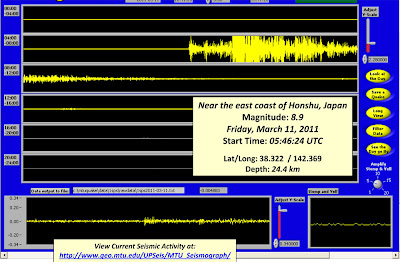"Call me Ishmael. Some years ago - never mind how long precisely - having little or no money in my purse, and nothing particular to interest me on shore, I thought I would sail about a little and see the watery part of the world" (Herman Menville, Moby Dick)
viernes, 11 de marzo de 2011
Earthquake sensors in Michigan Tech's geological and mining engineering and sciences department picked up the earthquake in Japan about 12.5 minutes after it happened, as shown in this chart. The large vibrations reveal the magnitude and length of the quake; the smaller jumps in the bars below show the aftershocks.
Suscribirse a:
Enviar comentarios (Atom)

No hay comentarios:
Publicar un comentario